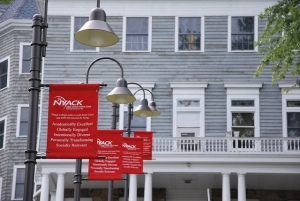 The current issue of the Chronicle of Higher Education focuses on the challenges facing African American college students, faculty, and administrators. Among the many pieces — one available to non-subscribers considers why so few black men go into STEM fields — one of the most useful is a tool compiling 2012 numbers from the U.S. Department of Education’s Integrated Postsecondary Education Data System (IPEDS) to show the gender, race, and ethnicity of students at over 4700 colleges, universities, seminaries, and other postsecondary institutions of higher learning.
The current issue of the Chronicle of Higher Education focuses on the challenges facing African American college students, faculty, and administrators. Among the many pieces — one available to non-subscribers considers why so few black men go into STEM fields — one of the most useful is a tool compiling 2012 numbers from the U.S. Department of Education’s Integrated Postsecondary Education Data System (IPEDS) to show the gender, race, and ethnicity of students at over 4700 colleges, universities, seminaries, and other postsecondary institutions of higher learning.
Unfortunately, this tool is hidden behind the paywall. But for those of you without a subscription who are interested in Christian and church-related higher ed, let me share a few results.
I’ll start by setting the national averages for women and the largest groups of students of color next to those median figures for the evangelical Council for Christian Colleges & Universities (CCCU). For contrast, here I’ll also include the medians for the Lilly Fellows Program (LFP), which includes Catholic, mainline Protestant, and other church-related schools (minus its 22 members that are also in the CCCU).
|
Women |
Asian |
Black |
Hispanic |
|
| National |
56.8% |
5.4% |
13.3% |
13.6% |
| CCCU |
59.1% |
1.2% |
7.0% |
4.3% |
| LFP (minus CCCU members) |
58.3% |
2.3% |
6.4% |
4.1% |
I’m interested in the gender number and should come back to it in a later post, but here I’ll flesh out what the IPEDS data reveal about racial and ethnic diversity at Christian colleges.
Overall, about one in five of those attending CCCU schools are students of color. (This also includes Native Americans, Pacific Islanders, and those of multiple races.) That’s actually higher than the non-CCCU members of the Lilly Network (17.4%). Three Lilly schools are majority-minority (University of the Incarnate Word in San Antonio and the network’s two historically black colleges and universities: Xavier of Louisiana and Bethune-Cookman), two fewer than the CCCU. The most diverse members of that evangelical consortium:
-

Nyack College – Creative Commons (Sonja Stark) Nyack (74.1%)
- Houston Baptist (65.5%)
- Belhaven (58.9%)
- University of the Southwest (51.2%)
- Warner (50.4%)
- Fresno Pacific (46.5%)
- California Baptist (44.0%)
- Vanguard (43.8%)
- Hope International (40.4%)
- Biola (39.6%)
With the notable exception of New York’s Nyack (here’s its statement on being “Intentionally Diverse”), it is striking that the most diverse CCCU schools are located in the South or Southwest, with California alone accounting for nos. 6-10. (Actually, 6-12, since the next two on the list are Azusa Pacific and San Diego Christian.) The most diverse Midwestern member of the consortium is #25 North Park (30.4%), the Chicago school that promotes itself as “Christian – Urban – Multicultural.”
By contrast, the Midwest and Northeast do figure more prominently at the other end of the table, accounting for half of the ten least diverse student bodies.
-

College of the Ozarks – Creative Commons (KTrimble) Waynesburg (5.2%)
- College of the Ozarks (5.5%)
- Huntington (5.9%)
- Cedarville (6.4%)
- Dordt (6.4%)
- Asbury (6.5%)
- Hannibal-LaGrange (7.7%)
- Houghton (7.9%)
- King (7.9%)
- Southwest Baptist (8.2%)
(For the record, my own Midwestern employer is at about the 25th percentile in this list, with 12.2% students of color as of Fall 2012. However, because the Chronicle gives Bethel’s enrollment as over 4300, it must be including adult learners, a much more diverse group than our residential college students.)
A few more observations:
- Just over a quarter of the CCCU schools (29) enroll black students at a rate higher than the national average, led by Belhaven (50.5%), Warner (35.5%), Nyack (34.9%), and Southern Wesleyan (30.3%).
- But far fewer (16) outpace the nation on Hispanic enrollment. In fact, more than two-thirds of CCCU schools are at half or lower the 13.6% rate. This is particularly noteworthy given the growth of Pentecostalism, evangelicalism, and Protestantism more generally in that population.
- Likewise, it’s striking to see that CCCU schools are much less likely to enroll Asian Americans than the rest of the sector, considering the cover story in this month’s issue of Christianity Today (“Asian Americans: Silent No More”). Of the fourteen CCCU members to exceed the national average here, half are on the West Coast (Biola, The Master’s College, Seattle Pacific, Azusa Pacific, Simpson, Point Loma Nazarene, Vanguard). And the next four (Westmont, Concordia-Irvine, Northwest, California Baptist) are also in that region, all enrolling Asian Americans as just over 5% of their student bodies.